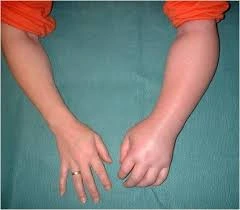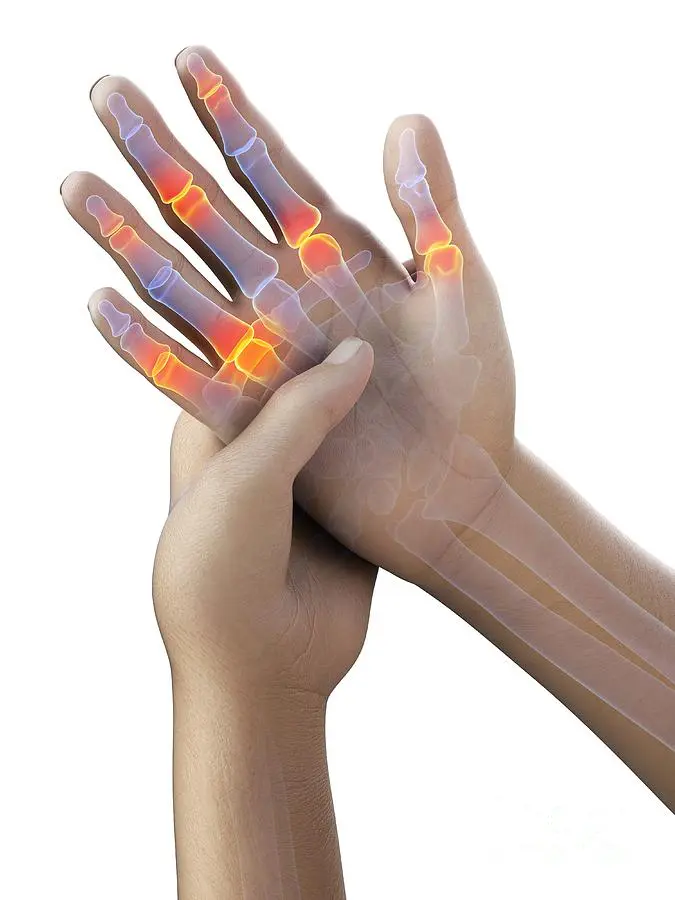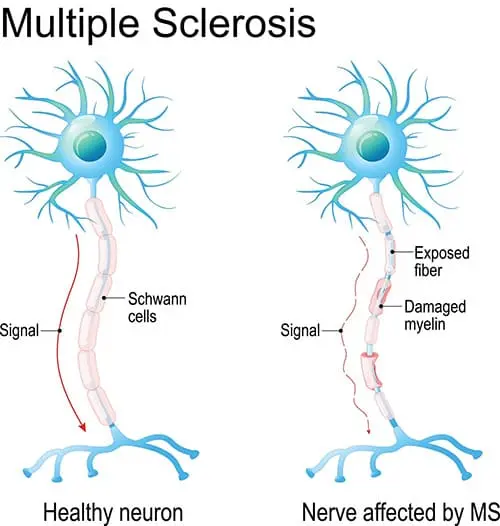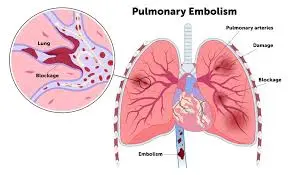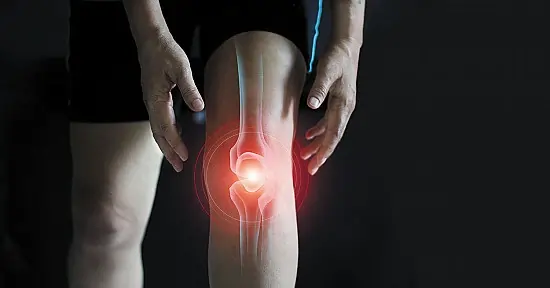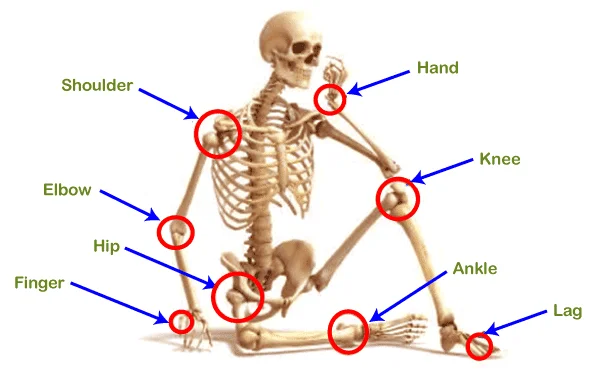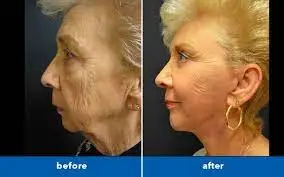Shoulder-Hand Syndrome Exercises
Introduction
Shoulder-Hand syndrome is a fairly common condition following a stroke. Typically, a stroke results in paralysis on one side of the body. The recovery from paralysis is subjective and varies among individuals.
Generally, the lower limbs show improvement more rapidly than the upper limbs. For reasons that are not yet clear, some individuals experience significant weakness in their hands, which can be quite painful. When there is intense pain in the hand and shoulder on the affected side, this condition is referred to as shoulder-hand syndrome.
Also referred to as:
Sudeck’s osteodystrophy
Complex regional pain syndrome (CRPS), previously known as reflex sympathetic dystrophy (RSD), is a condition that affects a specific part of the body, typically the arms or legs, and is characterized by pain, swelling, restricted movement, and alterations in skin and bone. It may start in one limb and then extend to other areas; about 35% of those affected report symptoms throughout their entire body. This disease has multiple names and includes two subtypes.
The symptoms can vary and will manifest differently in each patient.
Symptoms:
- Shoulder Pain
- Hand Pain
- Numbness
- Elbow Pain
- Wrist Pain
- Tingling
- Burning
- Stiffness
- Swelling
- Discoloration of the hand
Also known as Post-stroke complex regional pain syndrome (CRPS) or reflex sympathetic dystrophy of the upper limb. Shoulder-hand Syndrome (SHS) is a multifaceted disorder characterized by swelling and edema of the hand, heightened sensitivity to pain, severe discomfort, and loss of function in the shoulder joint, along with changes in skin color and temperature. The exact cause remains unknown, but it may stem from one or more factors, including:
- Prolonged immobility
- Repeated minor trauma from blood samples and intravenous injections
- Angio-spasm
- Perceptual deficit
- Central sympathetic dysregulation and neurogenic inflammatory responses
Complex Regional Pain Syndrome
Shoulder-hand syndrome is also known as Complex Regional Pain Syndrome (CRPS), a chronic pain disorder that incorporates elements of both autonomic and inflammatory syndromes. It can occur acutely in about 7% of patients following limb fractures, surgeries, or other injuries. Most instances resolve on their own within the first year; however, some progress to a chronic phase. This transition is often indicated by a shift from “warm CRPS,” which has prominent inflammatory symptoms, to “cold CRPS,” where autonomic features dominate.
Description
Shoulder-hand syndrome has two distinct types.
Type 1 occurs following an injury or illness that does not directly injure a nerve in the affected area. Type 2 occurs after a specific nerve injury.
While the triggers may differ, both types of shoulder-hand syndrome exhibit the same symptoms and follow identical three stages of the disease:
Stage I: Acute
This initial stage can last up to three months and begins with the rapid onset of extensive swelling, joint stiffness, and tenderness at the back of the hands. The affected individual may experience a burning sensation and heightened sensitivity to touch. The hand may appear pale due to constricted blood vessels. Movement of the hand can elicit significant pain in both the shoulder and hand. The pain tends to be more persistent and longer-lasting. There may be increased warmth and redness in the hand, along with accelerated nail and hair growth and excessive sweating. Radiographic imaging of the hands may reveal patchy areas of bone loss.
Stage II: Dystrophic
This stage can last between 3 to 12 months. Swelling becomes more constant, and skin wrinkling diminishes. The temperature of the skin cools down, and fingernails may become brittle; the pain becomes widespread. Stiffness increases, and the affected region becomes highly sensitive to touch.
Stage 3: Atrophic
This stage occurs after a year has passed. It is marked by the lack of swelling, tenderness, and pain, although the movement of the hands is restricted as the fingers may become stiff or assume a claw-like appearance, similar to Dupuytren’s contractures. A considerable decrease in bone density can be observed through x-rays taken at this stage.
Causes
Injuries like falling on the hand, fracturing the wrist bone, heart attacks, strokes, and possibly the use of certain medications (such as barbiturates) can contribute to this condition. Nevertheless, the exact mechanism behind the development of shoulder-hand syndrome remains unclear. According to one idea, the explanation might be a “short circuit” in the neurological system.
This “short circuit” leads to overactivity of the sympathetic (involuntary) nervous system, impacting blood flow and the functioning of sweat glands in the affected area. Symptoms typically manifest following an injury or surgical procedure. Additional causes encompass nerve compression, infections, cancer, neck issues, strokes, or heart attacks. Some individuals may also have a genetic predisposition that makes them more likely to develop this disorder.
Doctor Examination
Following a discussion of your medical history and symptoms, the physician will conduct a thorough examination of the affected hand. Individuals with shoulder-hand syndrome tend to be exceptionally protective of the injured limb, as even a gentle touch can elicit intense pain reactions.
Tests
There is no definitive test for diagnosing shoulder-hand syndrome. However, certain imaging studies, including x-rays, bone scans, and magnetic resonance imaging (MRI), can assist your doctor in reaching a solid diagnosis.
Treatment:
To achieve a meaningful recovery from this condition, it’s essential to initiate treatment as early as possible, which may help prevent the disease from worsening. Treatment typically comprises a mix of therapies, including:
Non-Surgical Treatments:
- Medications: Non-steroidal anti-inflammatory drugs (NSAIDs), oral corticosteroids, antidepressants, blood pressure drugs, anticonvulsants, and opioid pain relievers are recommended to help alleviate symptoms.
- Injection Therapy: Administering an anesthetic near the affected sympathetic nerves can help diminish symptoms. This approach is generally advised early in the course of shoulder-hand syndrome to halt further progression to later stages.
- Biofeedback: Enhancing body awareness and employing relaxation techniques may assist in providing pain relief.
- Therapy: Engaging in active exercises that emphasize normal usage of the affected limb is crucial for achieving long-term relief from this condition. Both physical and occupational therapy play vital roles in aiding patients to regain the typical use of the affected hand. Medications and other treatment methods can reduce the severity of pain, enabling the patient to participate in active exercise.
Surgical Treatments:
- If non-surgical options do not yield satisfactory results, there are surgical interventions that may provide a better approach to managing the syndrome.
- Spinal Cord Stimulator: Small electrodes are placed along the spine to deliver mild electrical impulses to the affected nerves.
- Pain Pump Implantation: A small device that administers pain medication to the spinal cord is implanted in the abdominal area.
- A psychological assessment and counseling are also important aspects of treatment for shoulder-hand syndrome.
Physiotherapy: Shoulder-Hand Syndrome Exercises
Mirror Therapy
This method is effective in enhancing sensory-motor function while decreasing pain and swelling in the upper limb of post-stroke patients.
Orthoses
A functional shoulder orthosis aids in preventing shoulder subluxation in post-stroke patients and lowers the likelihood of developing shoulder-hand syndrome.
A shoulder orthosis or shoulder brace helps avert subluxation—partial dislocation—by offering support and stability to the shoulder joint. This is especially crucial for patients experiencing hemiplegia due to a stroke, rotator cuff injuries, or nerve damage that can severely weaken the muscles and ligaments surrounding the joint.
It contributes to improvements in the following areas:
- Joint Alignment
- Muscle Support
- Pressure Distribution
- Pain Reduction
- Enhanced Proprioception
Acupuncture
When combined with a rehabilitation program, acupuncture may assist in alleviating pain, enhancing upper limb functionality, and facilitating daily activities compared to rehabilitation alone.
The Role of Exercises in SHS Management
Exercise is fundamental in managing Shoulder-Hand Syndrome (SHS), providing a variety of advantages:
- Pain alleviation: Engaging in regular physical activity can help lessen discomfort by enhancing blood flow, releasing endorphins, and decreasing the sensitivity of the nervous system.
- Passive and active range of motion (R.O.M.):
- Sustain the range of motion and functionality of the shoulder and hand.
- Decreases pain and swelling in the hand.
- Enhanced range of motion: Specific exercises can enhance joint flexibility and mobility in the shoulder and hand, alleviating stiffness and enhancing function.
- Building strength: Strengthening workouts can bolster muscle power and support the impacted joints, improving stability and minimizing pain.
- Functional enhancement: Exercise can aid individuals in regaining their capacity to carry out everyday tasks, such as dressing, eating, and writing, thus improving autonomy and quality of life.
- Avoidance of complications: Regular exercise can play a vital role in preventing issues linked to SHS, such as muscle wasting, contractures, and bone deterioration.
Categories of Exercises for Shoulder-Hand Syndrome
A well-rounded exercise regimen for SHS generally includes a mix of the following exercise categories:
Range of Motion Exercises
- Range of motion exercises focus on improving joint flexibility and mobility. These exercises should be conducted gently and gradually, steering clear of movements that induce substantial pain. Examples of ROM exercises for SHS comprise:
- Shoulder pendulum swings: Lean forward, letting the affected arm dangle loosely. Gently swing the arm back and forth, side to side, and in circular motions.
- Shoulder rotations: Turn your shoulders by standing with your arms at your sides, relaxed. Slowly rotate the shoulders both forward and backward.
- Arm raises: Lift the affected arm forwards and overhead, maintaining a straight elbow.
- Wall slides: Face a wall with the affected arm extended. Gradually slide your hand up the wall, elevating the arm as high as feels comfortable.
- Wrist curls: Hold a lightweight or object with the affected hand. Gently curl the wrist upward and downward.
- Finger exercises: Engage in various finger movements, such as bending and straightening each finger, forming a fist, and bringing the thumb to touch each fingertip.
Strengthening Exercises
- Strengthening workouts assist in enhancing muscle power and supporting the injured joints. These should be undertaken cautiously, starting with light resistance and incrementally increasing as tolerated. Examples of strengthening exercises for SHS incorporate:
- Isometric exercises: Contract the muscles without joint movement. For instance, push the affected arm against a wall or table and hold for several seconds.
- Resistance band exercises: Utilize resistance bands to offer mild resistance during upper body and hand movements.
- Light weightlifting: Employ light weights to conduct exercises like bicep curls, shoulder presses, and wrist curls.
Functional Exercises
- Functional exercises replicate daily actions and assist individuals in regaining the ability to carry out everyday tasks. These exercises may include:
- Grasping and releasing objects: Practice picking up and releasing items of various sizes and textures.
- Writing and drawing: Engage in writing and drawing activities to enhance fine motor skills in the hand.
- Dressing and undressing: Work on buttoning, zipping, and other dressing activities to boost hand dexterity.
- Eating and drinking: Rehearse using utensils and drinking from a cup to improve hand functionality.
Pain Management Techniques
- In addition to the outlined exercises, several pain management strategies can be integrated into the exercise program to alleviate pain and enhance comfort:
- Heat therapy: Utilize heat packs or warm compresses on the affected region to alleviate muscle tension and pain.
- Cold therapy: Apply ice packs or cold compresses on the affected area to help reduce inflammation and numb discomfort.
- Laser therapy: This is effective for minimizing pain and swelling in the affected hand and shoulder, enhancing range of motion and fostering independence in post-stroke patients.
- Transcutaneous electrical nerve stimulation (TENS): Employ a TENS unit to deliver mild electrical impulses to the affected area, aiding in pain relief.
- Massage therapy: Gentle massage can enhance circulation, decrease muscle tightness, and relieve pain.
Guidelines for Performing Exercises for Shoulder-Hand Syndrome
- Begin slowly and progressively increase intensity: Start with gentle movements and gradually raise the intensity and duration of exercises as tolerated.
- Listen to your body: Be attentive to your pain levels and cease any exercise that causes significant discomfort.
- Engage in regular exercise: Consistency is essential for achieving desired results. Aim to practice exercises several times a week, as suggested by your healthcare provider.
- Maintain proper posture: Correct posture is crucial for executing exercises accurately and preventing further injury.
- Stay hydrated: Drink sufficient water to remain hydrated and support muscle performance.
- Communicate with your healthcare provider: Keep your healthcare provider updated on your progress and any concerns you might have.
Important Considerations
- Consult with a healthcare professional: It is essential to speak with a healthcare professional, such as a physical therapist or occupational therapist, prior to initiating any exercise program for SHS. They can evaluate your unique condition, create a tailored exercise plan, and offer advice on correct technique and progression.
- Avoid overexertion: Although exercise is vital, it is important to steer clear of overexertion, which can aggravate symptoms and hinder recovery.
- Be patient and persistent: The recovery process from SHS can be lengthy and may demand steady effort. Be kind to yourself and acknowledge small achievements along the way.
- E.M.G.
In Bayesian network meta-analysis, integrating EMG biofeedback with rehabilitation training emerged as the most effective method for enhancing upper limb motor function and alleviating pain in patients with post-stroke shoulder-hand syndrome. However, further analysis and validation are required through more qualitative randomized controlled trials.
Handling Complex Regional Pain Syndrome (CRPS) and Shoulder Pain After Strokes
- Definition: In this context, ‘early’ refers to the strength of evidence for therapies applicable to patients less than 6 months post-stroke, while ‘late’ indicates the strength of evidence for therapies suitable for patients more than 6 months after the initial stroke event.
- Note: Shoulder pain may stem from hemiplegia itself, injuries, or acquired orthopedic conditions resulting from compromised joint and soft tissue integrity and spasticity.
A. Preventing Subluxation and Pain in Hemiplegic Shoulders
- To avoid or reduce shoulder discomfort and damage, joint protection techniques should be used throughout the early or flaccid healing phase. Among these techniques are the following: Supporting and positioning the arm while at rest.
- Safeguarding and supporting the arm during functional movements; refrain from pulling on the affected arm.
- Protecting and supporting the arm while using a wheelchair; examples include utilizing a hemi-tray, arm trough, or pillow.
- The use of slings should generally be discouraged, except during the flaccid stage, as they may discourage arm usage, inhibit arm movement, contribute to contracture development, and negatively affect body image.
- The Chedoke-McMaster Stroke Assessment Impairment Inventory is used for patients who have a flaccid arm, electrical stimulation may be advisable.
- Overhead pulleys should not be utilized. Passively moving the arm over 90 degrees of shoulder flexion or abduction is not advised until the humerus is laterally rotated and the scapula is turned upward.
- Healthcare personnel, patients, and family members should be educated on how to properly protect, position, and handle the affected arm.
- For instance, careful positioning and support of the arm should be employed during assisted transfers; avoid pulling on the affected arm.
B. Assessment of Hemiplegic Shoulder Pain
- Evaluating a painful hemiplegic shoulder may include assessing muscle tone, active movement, changes in soft tissue length, alignment of shoulder girdle joints, posture of the trunk, pain levels, orthopedic changes in the shoulder, and the impact of pain on both physical and emotional well-being.
C. Management of Hemiplegic Shoulder Pain
- Regarding hemiplegic shoulder pain associated with limited range of motion, treatments may involve gentle stretching and mobilization techniques, typically focusing on enhancing external rotation and abduction.
- Gradually increasing active range of motion should occur alongside efforts to restore alignment and strengthen weakened shoulder girdle muscles.
- Taping the affected shoulder has been shown to help reduce pain.
- If there are no contraindications, analgesics (such as ibuprofen or narcotics) may be considered for pain relief on an individual basis.
- Botulinum toxin injections into the subscapularis and pectoralis muscles could be utilized for treating hemiplegic shoulder pain believed to be related to spasticity.
- Subacromial corticosteroid injections may be indicated in patients when pain is attributed to injury or inflammation in the subacromial area (rotator cuff or bursa) in the hemiplegic shoulder.
D. Hand Edema
- For patients experiencing hand edema, the following interventions may be proposed:
- Range-of-motion exercises may be classified as passive, active, or active-assisted.
- When resting, the arm should be elevated if feasible.
- Retrograde massage.
- Mild grade 1-2 mobilisations for hand and finger accessory motions.
- There is insufficient evidence either in favor of or against the use of compression garments, such as compression gloves.
E. Reflex Sympathetic Dystrophy or Shoulder-Hand Syndrome are alternative names for Complex Regional Pain Syndrome (CRPS).
Prevention: To prevent CRPS, individuals can engage in active, active-assisted, or passive range of motion exercises.
Diagnosis should rely on clinical observations, which include pain and tenderness in the metacarpophalangeal and proximal interphalangeal joints, and may be linked to swelling over the back of the fingers, changes in skin texture, heightened sensitivity, and restricted movement.
A triple-phase bone scan, which shows increased uptake around the joints in the distal upper extremity, can aid in diagnosis.
Management: An initial treatment with oral corticosteroids, beginning at a dosage of 30 to 50 mg daily for 3 to 5 days, followed by a tapering of doses over one to two weeks, can be effective in alleviating swelling and pain.
Conclusion
Shoulder-hand syndrome presents a complex challenge, but with appropriate management that includes a tailored exercise program, individuals can see notable improvements in pain, function, and overall quality of life.
By integrating the exercises and strategies discussed in this article, those affected by SHS can play an active role in their recovery and restore their independence in daily activities. Always consult with a healthcare provider to create a personalized exercise regimen that is both safe and effective for your individual circumstances.
Despite extensive literature on the diagnosis and management of shoulder-hand syndrome, there are varied opinions regarding the best approaches for treatment. For clarity, shoulder-hand syndrome should be viewed as part of the broader term—reflex sympathetic dystrophy. This clinical condition has been referred to by many names, including reflex physiopathia, reflex neurovascular dystrophy, posttraumatic fibrosis, Sudeck’s atrophy, causalgia, atrophic hand, and postinfarctional sclerodactylia, among others.
FAQs
How do you treat shoulder-hand syndrome?
The initial management of shoulder-hand syndrome primarily involves conservative approaches such as physical therapy. Corticosteroid treatment is also an option. The importance of effective physical therapy cannot be overlooked, as it contributes positively to outcomes and can help prevent the syndrome from developing.
How to tighten shoulder ligaments?
Gradually rotate your forearm away from your body while keeping your elbow and upper arm pressed against the towel roll or the side of your body until you start to feel tightness in your shoulder. Slowly return your arm to the starting position and repeat this 8 to 12 times.
What is stage 1 shoulder-hand syndrome?
The symptoms of CRPS type 1 typically evolve through three stages: acute, dystrophic, and atrophic. The acute phase occurs in the first 1 to 3 months and may present with burning sensations, swelling, increased sensitivity to touch, enhanced hair and nail growth in the affected area, joint discomfort, as well as variations in color and temperature.
What is another name for shoulder-hand syndrome?
Shoulder-hand syndrome is also referred to as complex regional pain syndrome (CRPS). It has alternative names such as reflex sympathetic dystrophy (RSD), Sudeck’s atrophy, and causalgia.
What is the cause of shoulder syndrome?
Shoulder pain is very prevalent in the general population, commonly resulting from shoulder impingement syndrome (SIS). This condition is particularly frequent among individuals with specific shoulder weakness patterns or those who engage in repetitive activities that require raising their arms to or above shoulder height.
References
- Complex regional Pain syndrome doctors in Shoulder hand syndrome treatment in Pune..
- https://www.drrahulbade.com/sudecks-osteodystrophy-shoulder-hand-syndrome-crps/
- 5.3. Management of Shoulder Pain & Complex Regional Pain Syndrome (CRPS) following Stroke. (n.d.). Canadian Stroke Best Practices.
- https://www.strokebestpractices.ca/recommendations/stroke-
- rehabilitation/management-of-shoulder-pain-complex-regional-pain-syndrome-crps-following-stroke
- Shoulder Hand Syndrome | Shoulder Rehabilitation | Bangalore Shoulder Institute.
- https://bangaloreshoulderinstitute.com/shoulder-hand-syndrome/
- (n.d.)https:/www.physio-pedia.com/Shoulder-hand_Syndrome

